65 years of Computer Science in India
August 29, 2019
Shivanand Kanavi, former VP, TCS and adjunct faculty at the National Institute of Advanced Studies, marks the milestones in India's computer science journey.
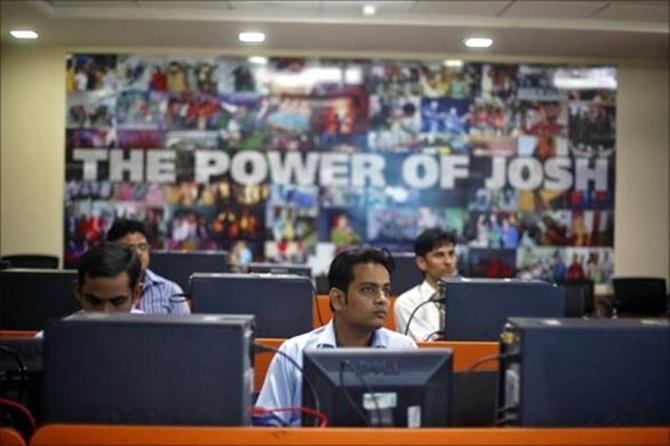
Photograph: Reuters
The late R Narasimhan was probably the first Indian to study computer science back in the late 1940s and early 1950s in the US.
After his PhD in mathematics, he came back to India in 1954 and joined the Tata Institute of Fundamental Research, being built by Homi Bhabha.
India owes much of its scientific and technical base today to a handful of visionaries.
Homi Bhabha was one of them.
Though a theoretical physicist by training, Dr Bhabha was truly technologically literate.
He not only saw the need for India to acquire both theoretical and practical knowledge of atomic and nuclear physics, but also the emerging fields of electronics and computation.
After starting research groups in fundamental physics and mathematics, at the newly born Tata Institute of Fundamental Research, Dr Bhabha wanted to develop a digital computing group in the early '50s!
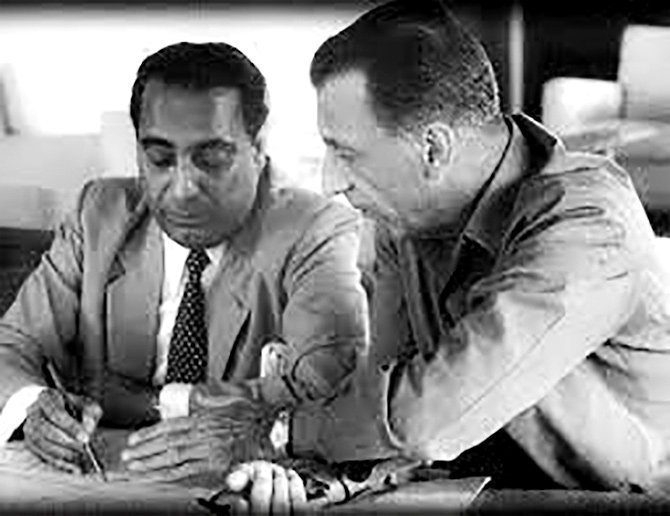
IMAGE: Dr Homi J Bhabha, left, with J R D Tata.
The audacity of this dream becomes apparent if one remembers that at that time von Neumann was barely laying the foundations of computer science and building a handful of computers in the USA.
He had no dearth of dollars for any technology that promised the US a strategic edge over the Soviet Union.
After the Soviet atomic test in 1949, hubris had been replaced by panic in the US government circles.
And here was India emerging from the ravages of colonial rule and a bloody Partition, struggling to stabilise the political situation and take the first the steps in building a modern industrial base.
In terms of expertise in electronics in India, there did not exist anything more than a few radio engineers in the All India Radio and some manufacturers merely assembling valve radios.
Truly, Dr Bhabha and his colleagues must have appeared as incorrigible romantics.
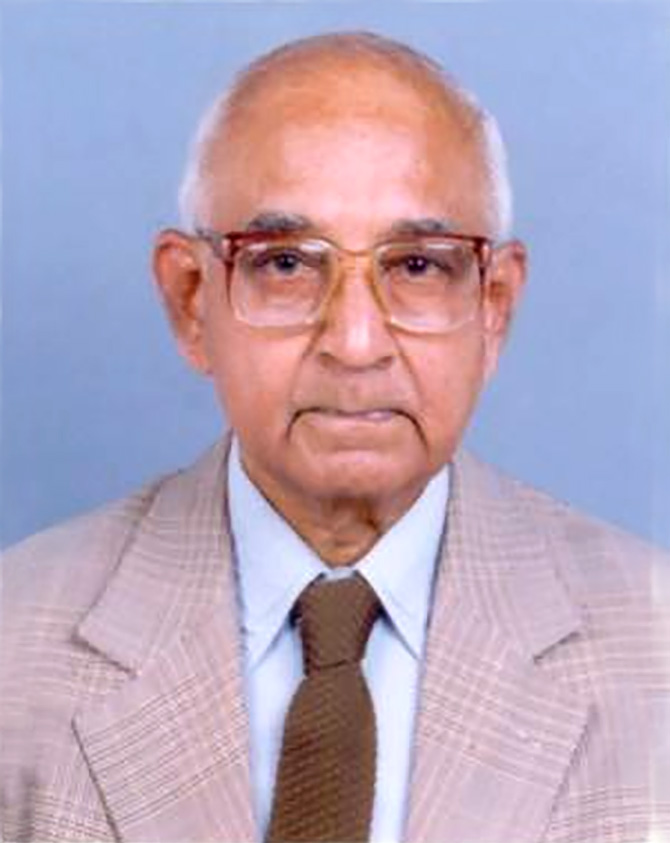
IMAGE: Dr Rangaswamy Narasimhan, pioneering computer scientist.
Once he had decided on the big picture, Dr Bhabha was a pragmatic problem solver.
He recruited Dr Narasimhan to TIFR in 1954 with the express mandate to build a digital computing group as part of a low profile instrumentation group.
"After some preliminary efforts at building digital logic sub-assemblies, a decision was taken towards late 1954, to design and build a full scale general purpose electronic digital computer, using contemporary technology," Dr Narasimhan told me.
"The group consisted of six people, of which except I, none had been outside India. Moreover, none of us had ever used a computer much less designed or built one!" Dr Narasimhan recalled.
The group built a pilot machine in less than two years, to prove their design concepts in logic circuits.
Soon after the pilot machine became operational, in late 1956, work started on building a full scale machine, named TIFR Automatic Computer (TIFRAC), in 1957.
Learning from the design details of the computer at the University of Illinois, TIFRAC was completed in two years.
However, the lack of a suitably air-conditioned room, delayed the testing and commissioning of the machine by a year!
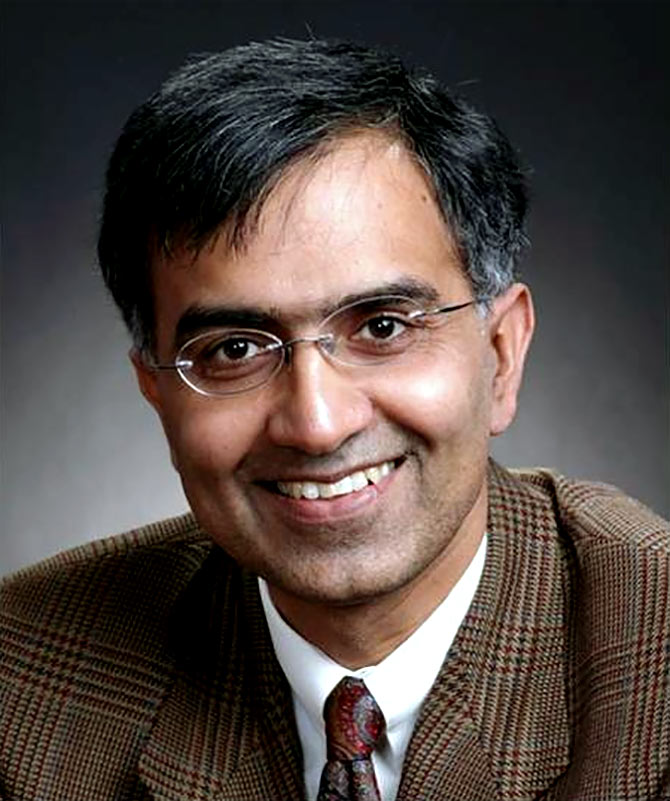
IMAGE: Sanjiv Arora, theoretical computer scientist.
Comparing these efforts with the contemporary state of the art in the 1950s, Dr Narasimhan said, "Looking at the Princeton computer, IBM 701, and the two TIFR machines, it emerges that except for its size, the TIFR pilot machine was quite in pace with the state of the art in 1954."
"TIFRAC too was not very much behind the attempts elsewhere in 1957, but by the time it was commissioned in 1960, computer technology had surged ahead to the second generation."
"Only large scale manufacturers had the production know-how to build transistorised second generation computers."

IMAGE: Umesh Vazirani, computer researcher.
TIFRAC, however, served the computing needs of the budding Indian computer scientists for four more years, working even double shift.
The project created a nucleus of hardware designers and software programmers and spread computer consciousness among Indian researchers.
Meanwhile, computing groups had sprung up in Kolkata at the Indian Statistical Institute and the Jadavpur Engineering College as well.
In the mid-'sixties TIFR acquired the first ever high-end machine produced by Control Data Corporation, CDC 3600, and established a national computing facility.

IMAGE: Kesav V Nori, computer scientist educationist.
The other source of computer science in India came from the new set of Indian Institutes of Technology being established in Kharagpur, Kanpur, Bombay, Delhi and Madras.
IIT Kanpur became the first engineering college to start a computer science group with a Masters and even a PhD programme in the late '60s.
That was really ambitious when only a handful of universities in the world had such programmes.
H Kesavan, V Rajaraman, H N Mahabala, Kesav Nori, H Sahasrabuddhe at IIT Kanpur played a key role in computer science education in India.
"At the risk of not specialising in a subject, I purposefully chose different topics in computer science for my PhD students -- 32 till the '80s when I stopped doing active research -- who then went on to work in different fields of computer science," remembers Rajaraman.
"Those days, I thought since computer science was in its infancy in India, we could ill afford narrow specialisation," Rajaraman adds.
Generations of computer science students in India thank Rajaraman for his lucidly written, inexpensive textbooks.
They went a long way in popularising computing.
"At that time foreign text books had barely started appearing and yet proved to be expensive. So, I decided to write a range of textbooks," says Rajaraman.
"The condition I had put before my publisher was simple -- that production should be of decent quality. but the book be priced so that the cost of photocopying would be higher than buying the book," he says.
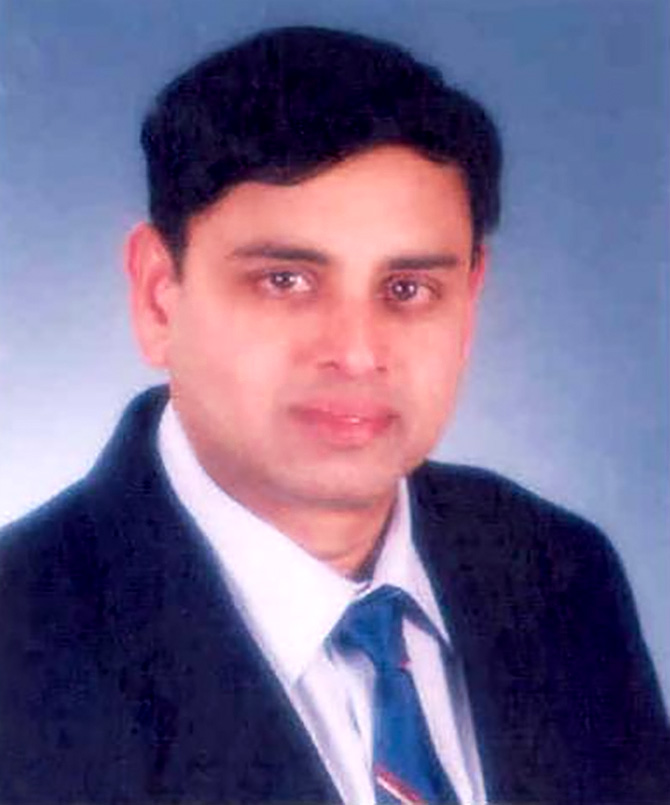
IMAGE: Narendra Karmarkar, mathematician.
The combination of research at TIFR, the Indian Institute of Science, Bangalore, and teaching combined with research at the five new IITs, led to a fairly rapid growth of computer science community.
Today, computer science and engineering graduates from IITs and other engineering colleges are in great demand from prestigious universities and hi-tech corporations all over the world.
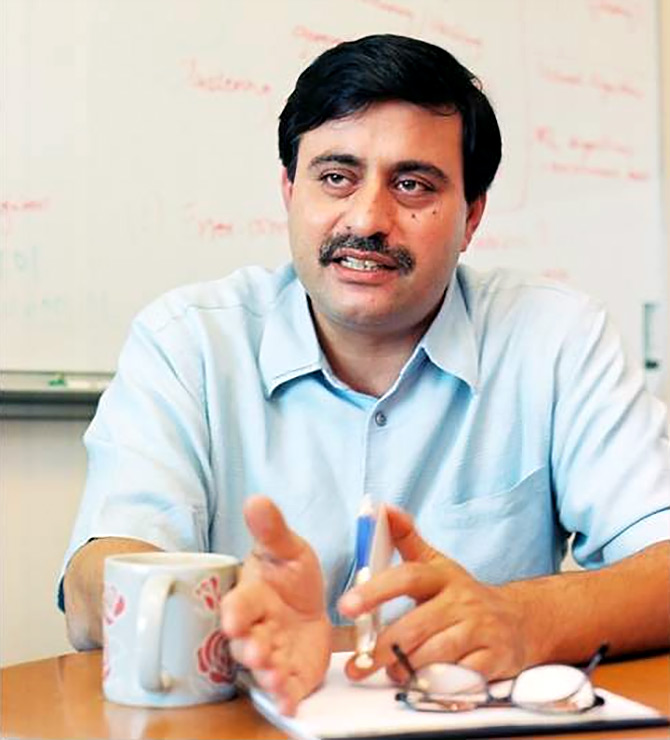
IMAGE: Dr Rajeev Motwani, mentor to Google's founders.
However, the late Dr Rajeev Motwani, an alumnus of IIT Kanpur, guru to Sergei Brin and Larry Paige -- founders of Google and a professor of computer science at Stanford University, recalled to me in 2002, "I did my PhD work at Berkeley and am currently actively involved in teaching at Stanford, but the days I spent in IIT Kanpur are unforgettable. I would rate that programme, and the ambience created by teachers and classmates, etc, better than any I have seen elsewhere."
Winner of the prestigious Godel Prize in computer science and a technical advisor to Google, Dr Motwani was no mean achiever himself.

IMAGE: Manindra Agrawal, innovator.
If we are looking for global headline grabbing development in computer science from India, then surely there is no better achievement than that of Manindra Agarwal a faculty member at IIT Kanpur and his two undergraduate students, Neeraj Kayal and Nitin Saxena.
On August 8, 2002, Agrawal, Kayal and Saxena made the headlines of The New York Times -- a rare happening for any group of scientists.
Two days earlier, they had announced in a research paper that they had solved the centuries old problem of a test for the prime nature of a number.
Their algorithm showed that it is computable in a finite amount of time -- in 'polynomial time' to be exact in computer science jargon.
The claim was immediately checked worldwide and hailed as an important achievement in global computer science circles.
Many looked at it as a tribute to education at the IITs.
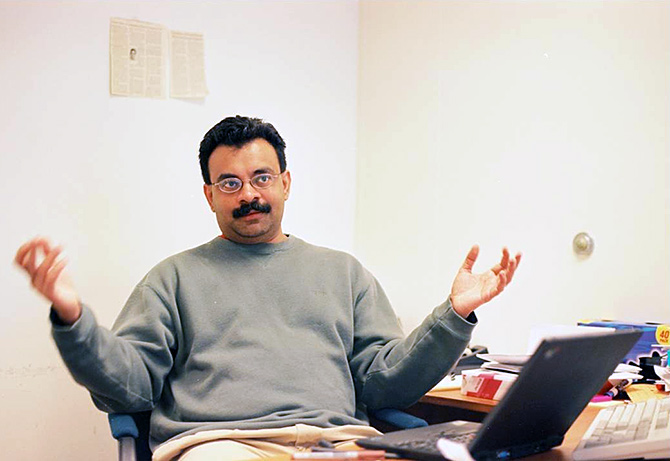
IMAGE: Madhu Sudan, computer scientist.
Many Indian students of computer science have gone on to put their stamp on global computer science: R Narasimhan, Raj Reddy, Narendra Karmarkar, Rajiv Motwani, Umesh Vazirani, Madhu Sudan, Sanjiv Arora, Luv Grover, Ravi Kannan, Manindra Agarwal to mention a few.

IMAGE: Ravi Kannan.
Indians have won all the major honours and awards in computer science like the Turing Award, Fulkerson Prize; Nevanlinna Prize; Godel Prize etc.
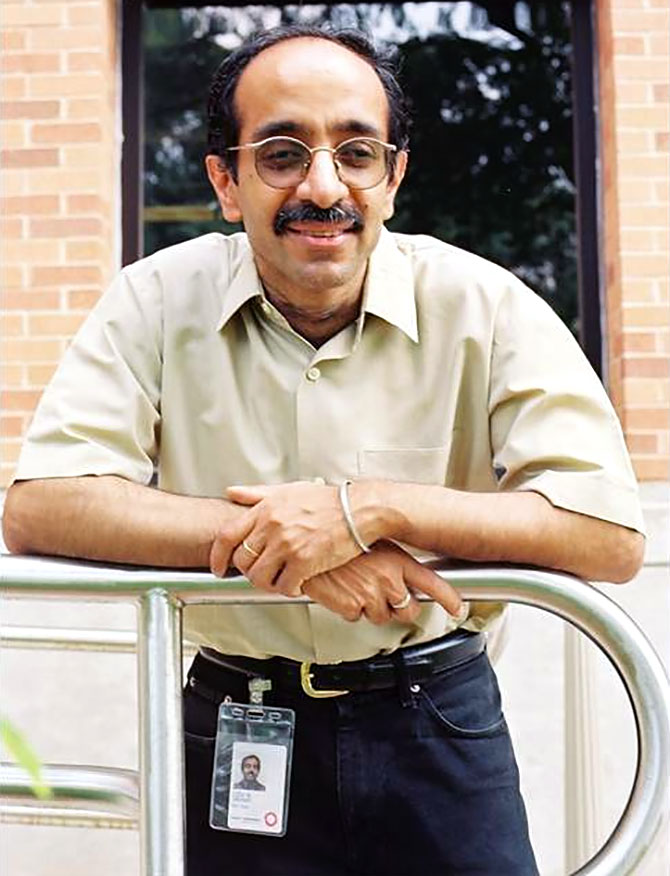
IMAGE: Luv Grover.
Besides Saraswati -- the Goddess of wisdom and learning -- computer science in India has won over Lakshmi, the Goddess of wealth as well.
Today, the Indian IT industry involves over 2 million engineers that do business worth over $160 billion a year and growing and have a multinational presence.
A pioneering company like TCS (1968) today is the largest IT company with over 400,000 engineers and a market cap of about $120 billion that rivals any other in the world.
The fruits of computer science are now available to over a billion Indians in their daily life with the largest digital projects in the world like Aadhaar, computerisation of Indian Railways, technology enabled financial systems, stock markets and banking and so on.
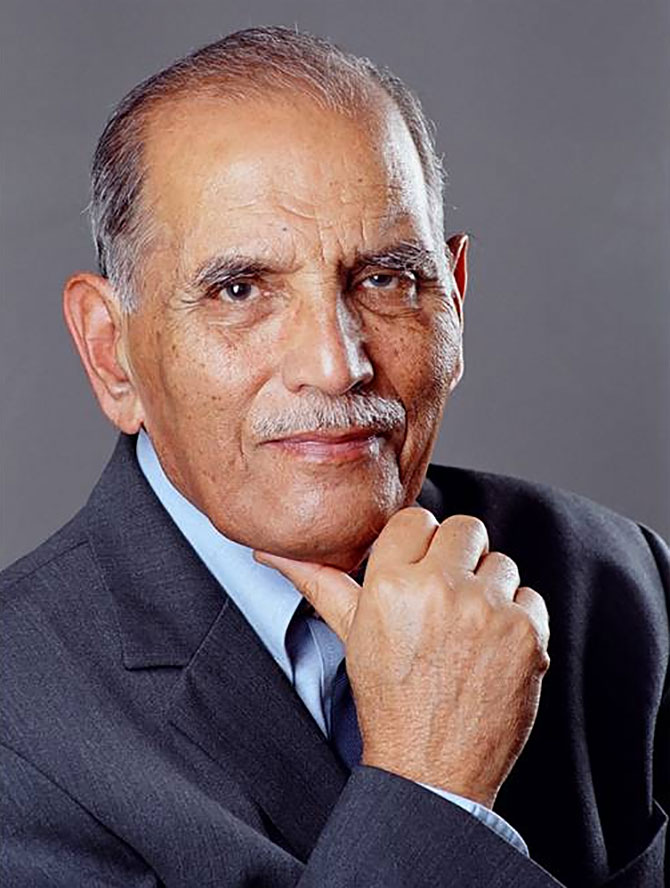
IMAGE: F C Kohli, the mastermind behind TCS's success story.
It is time we salute the foresight of Homi Bhabha and R Narasimhan who started the computer science group at TIFR and J R D Tata and F C Kohli who pioneered the IT business with TCS.
Shivanand Kanavi, is former VP, TCS, adjunct faculty at NIAS and author of Sand Silicon: The Amazing Story of Digital Technology.
All Photographs: Kind courtesy, Shivanand Kanavi.